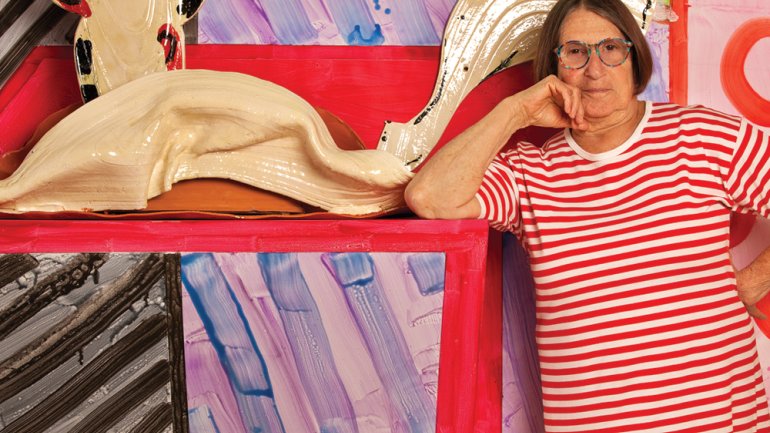Masters: Betty Woodman
Masters: Betty Woodman
Betty Woodman resolved to work in ceramics in high school, and that determination has carried her through more than six decades of achievement. She needed determination, because the road wasn’t exactly laid out for her.
She came of age in an era when women weren’t taken seriously as artists or academics. Yet she excelled at both. She spent 40 years as a teacher, most recently as a professor of fine art at the University of Colorado Boulder. And she is internationally recognized as one of the most important ceramic sculptors of our time, with work in more than 50 museum collections, including the Metropolitan Museum of Art (where she had a solo exhibition in 2006), the Museum of Modern Art, and the National Gallery of Art. Since 1970, she’s had more than 100 solo exhibitions around the world. Her 20-page résumé is a litany of exhibitions, publications, lifetime achievement awards, NEA fellowships, and honorary doctorates. She was named to the American Craft Council College of Fellows in 1993.
Woodman has reached this pinnacle of success through a potent combination of talent and self-possession. The talent is obvious; the self-possession takes a little explanation. She tells the story of acquaintances offering to introduce her to an accomplished potter in Italy in 1965. “But they wouldn’t introduce me as another artist,” she recalls. “They’d just introduce me as an admiring American woman.” How did she respond? “I said forget it.”
Throughout her career, Woodman has known who her friends are and drawn on their support. First among them is her husband, George, a photographer. “Marrying George, and my life with another artist, has been very, very, very important,” she says. “We have a very vital exchange of ideas – probably every other day or something. We’re in each other’s studios and talking about work.”
Conversations she has had as a colleague and teacher have helped shape her work. In the beginning, Woodman saw herself as a production potter, “wanting to make functional pieces and wanting in some way to serve society by making beautiful things for people to use, and I felt that this was very, very important.” But here again, Woodman’s singular vision for herself and her work prevailed. “I still feel it’s important,” she says, “but somehow my work sort of moved along, and I moved away from that.”
Though she is known as a sculptor today, look closely at her work, and you’ll see glimpses of function – pitchers and trays, tureens and cups – embedded in her pieces. You’ll see evidence of her training at the School for American Craftsmen in the late 1940s. But perhaps, more than anything, you’ll see an effortlessness that belies the obstacles Woodman has had to overcome as an artist. And she’d have it no other way. “I want the work to look as if it was rather easy, even if it wasn’t,” she says. “I want people to look at it and experience it.”

